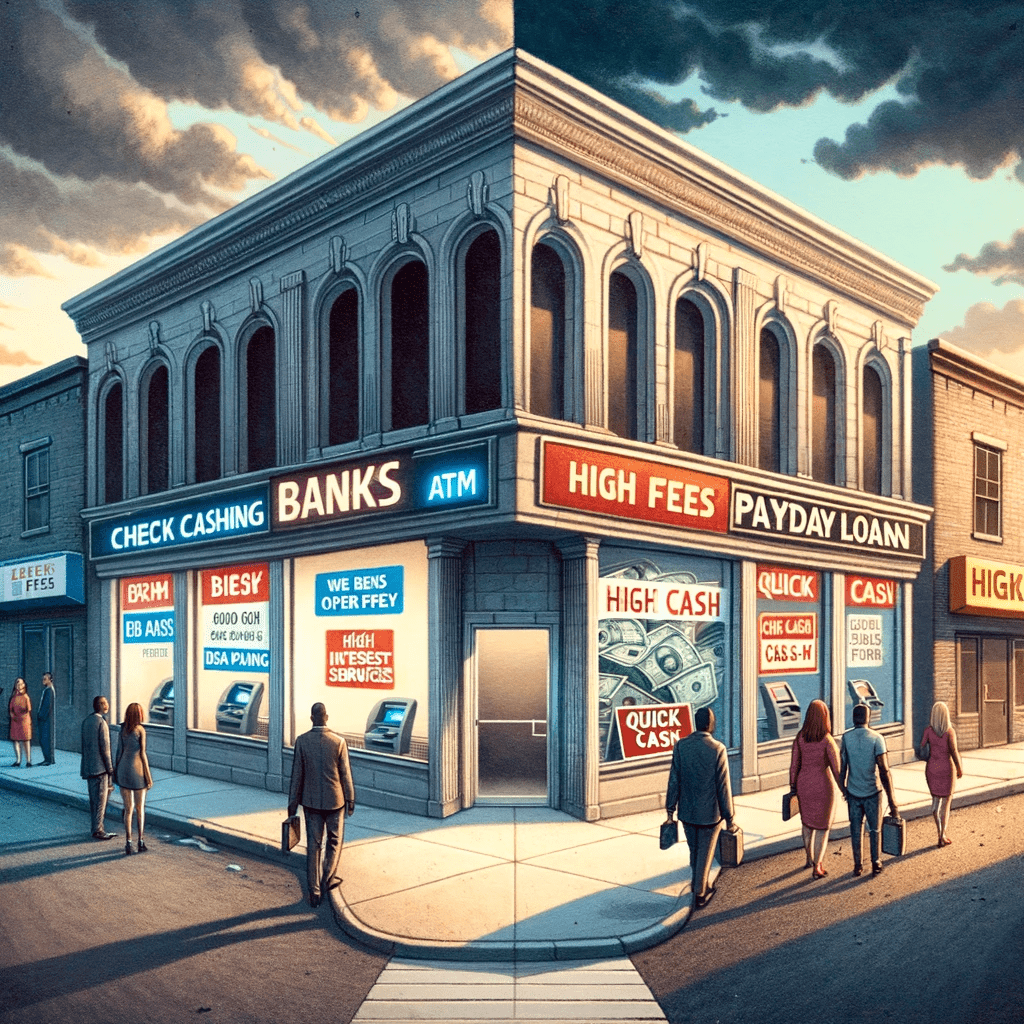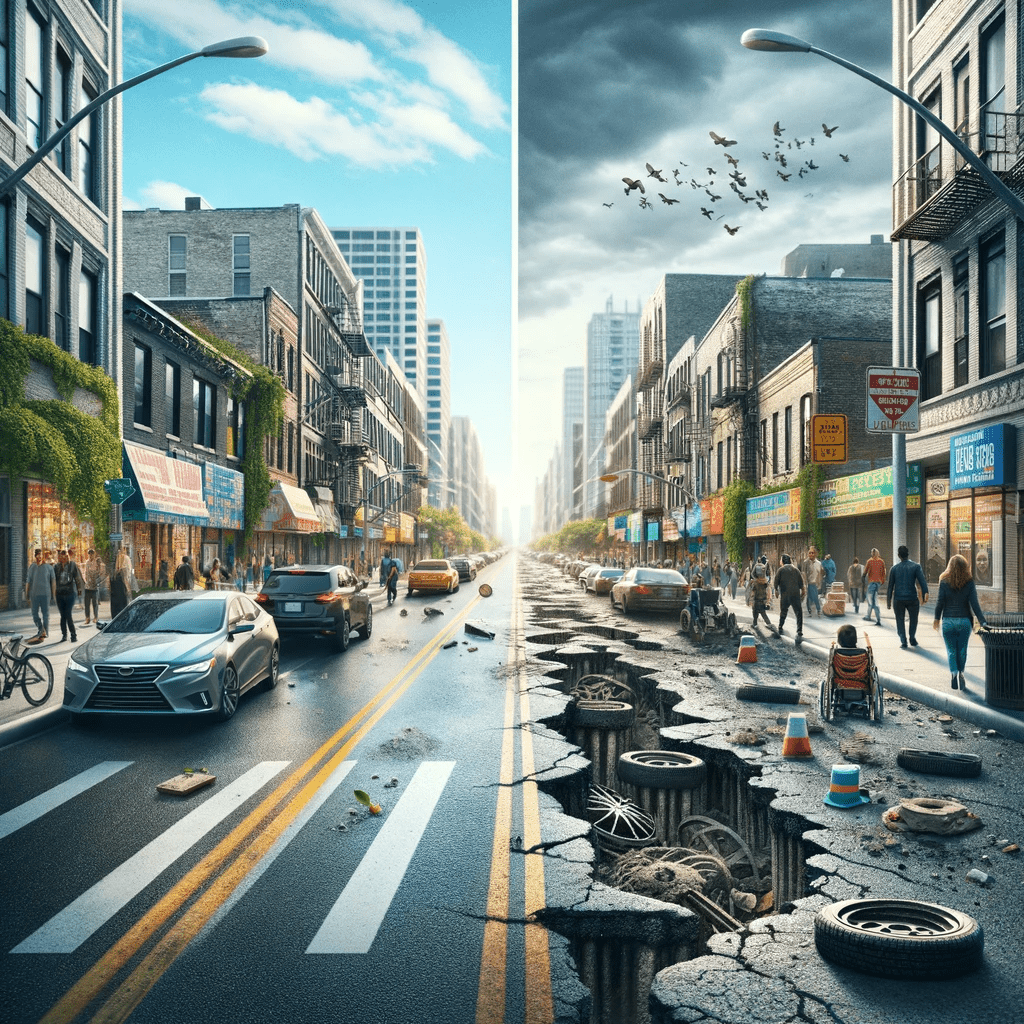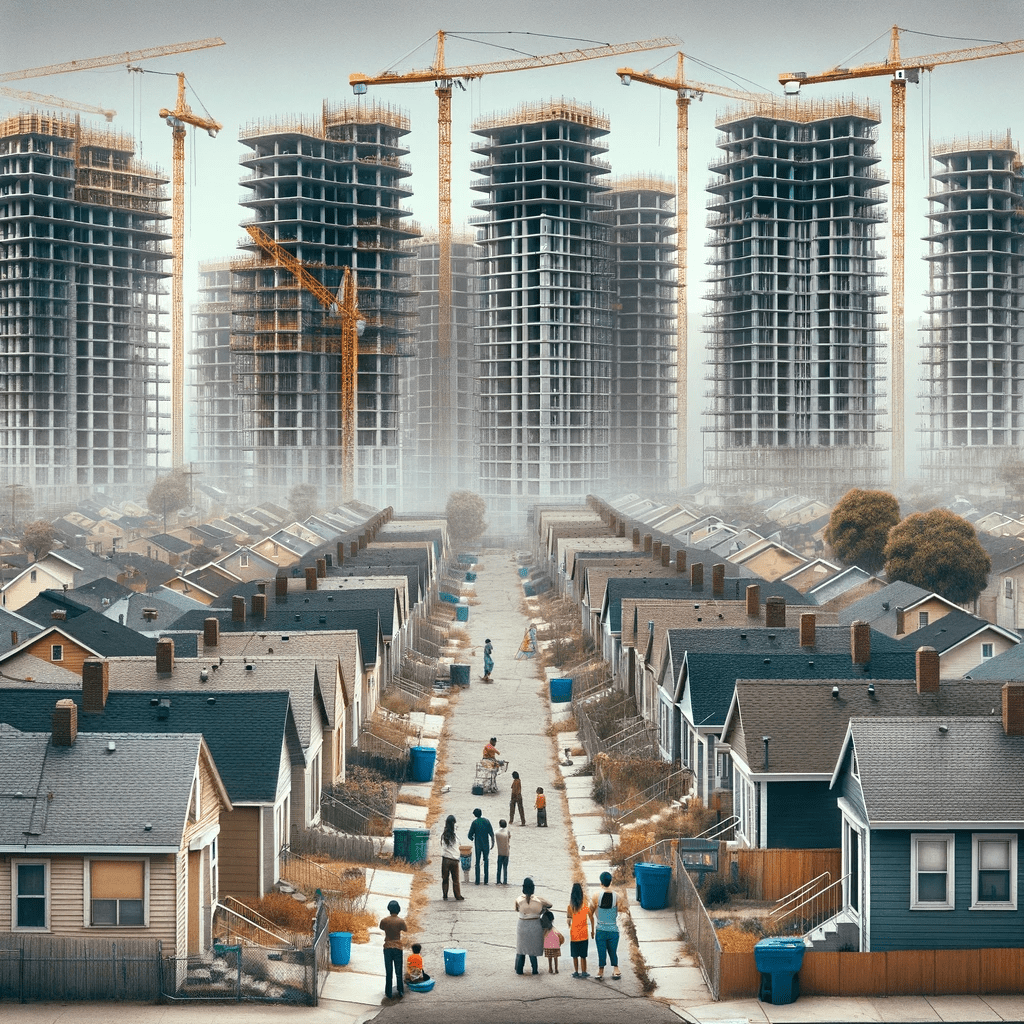
Introduction:
Beneath the vibrant facade of urban life lies a starkly different reality for the residents of inner-city communities. Here, the daily struggles are not just about making ends meet but also about facing systemic disparities that are seldom acknowledged in mainstream discourse. This article aims to bring these issues to the forefront, examining the challenges and advocating for equitable solutions.
The Restroom Dilemma: A Matter of Basic Needs
Access to public restrooms is a fundamental human need, yet in many lower-income areas, this basic amenity is a luxury out of reach. The absence of accessible restrooms not only poses a health risk but also strips individuals of their dignity. It’s a silent statement made by closed doors and “customers only” signs that some citizens are less worthy of basic amenities.

- Pros:
- Public restrooms can promote better hygiene and health.
- Accessibility can enhance the quality of life and dignity for all.
- Cons:
- In lower-income areas, restrooms are often non-existent or inaccessible.
- The lack of facilities can lead to health issues and a sense of neglect.
Financial Deserts: The Scarcity of Banking Services
While affluent neighborhoods boast multiple banking institutions, poorer communities are often financial deserts. The dearth of banks in these areas leaves residents reliant on check cashing services and payday loans with exorbitant fees, perpetuating a cycle of debt and instability. The absence of traditional banking services is a barrier to financial literacy and economic growth.

- Pros:
- Banks can provide financial stability and growth opportunities for residents.
- They offer essential services that check cashing services cannot.
- Cons:
- Predominance of check cashing and loan services over banks in poorer areas.
- This scarcity perpetuates financial instability and hinders economic progress.
The Pothole Predicament: Infrastructure Inequality
The condition of roads in a community speaks volumes about the priorities of its leaders. In many inner-city areas, the prevalence of potholes is not just a nuisance but a symbol of neglect. Each jarring trip down a poorly maintained street serves as a daily reminder to residents that their neighborhoods are overlooked when it comes to infrastructure investment.

- Pros:
- Well-maintained roads are crucial for safety and community well-being.
- Smooth roads contribute to positive attitudes and community pride.
- Cons:
- Inner-city areas often suffer from neglected road maintenance.
- The prevalence of potholes can lead to vehicle damage and contribute to daily stress.
Political Promises vs. Reality: The Disconnect
Campaign flyers flutter through the streets, promising reform and attention to high-profile issues. Yet, the immediate concerns of inner-city residents—such as the need for basic amenities, financial services, and road repairs—are often overshadowed. The disconnect between the political agenda and the real-life challenges faced by these communities fosters a sense of abandonment and disillusionment.

- Pros:
- Political engagement can lead to positive change and community development.
- Addressing local issues can improve the daily lives of residents.
- Cons:
- Politicians often focus on broader issues, neglecting immediate local concerns.
- The disconnect between campaign promises and community priorities can lead to disillusionment.
Gentrification and Housing: The Silent Shift
Gentrification is often heralded as a sign of urban renewal, but for the residents whose families have lived in these neighborhoods for generations, it signals displacement and loss. As property values rise and new developments take shape, the original community members find themselves priced out, their voices drowned out by the sound of construction and the promises of a “better” neighborhood.

- Pros:
- Gentrification can bring new resources and revitalization to neighborhoods.
- Improved housing standards can uplift the community.
- Cons:
- Gentrification often displaces long-term residents, particularly in black communities.
- Skyrocketing rents and stringent rental requirements marginalize the poor.
Conclusion:
The disparities that riddle our inner cities are more than just inconveniences; they are systemic issues that require immediate attention and action. By highlighting these challenges, FCFVA.com is committed to advocating for a more equitable society where every community member, regardless of their economic status, is treated with dignity and has access to the resources they need. It’s time for a collective effort to bridge the gaps and ensure that the urban landscape is inclusive and supportive for all.

